Analyzing Atrium Volume Designs for Hot and Humid Climates
Abstract
1. Introduction
2. Literature Review
- ▪
- To determine the optimized volume of the atrium zone (atrium proportion) and office zone (office proportion), and window opening ratios of 0%, 50%, and 100% throughout the year in single-floor, medium-rise, and high-rise buildings according to passive and active internal conditions (different months based on a hot and humid climate).
- ▪
- To illustrate the thermal comfort of the atrium and office zone in a hot and humid climate using the northeast, northwest, southeast, and southwest atrium placements in the office (atrium) building design.
- ▪
- To propose a practical method for predicting thermal comfort based on the adaptive model for a natural ventilation internal condition, and predicted mean vote (PMV) and percentage of people dissatisfied (PPD) for the mechanical internal condition system.
3. Materials and Methods
- All of the simulation models were located in Famagusta, North Cyprus. Consequently, Famagusta weather data was used for all of the simulations. The weather condition of Famagusta, Cyprus, is a hot and humid climate. Throughout August, the average temperature is 27 °C, which is the hottest month. The coldest month is January, for which the average temperature is 12 °C. Furthermore, December is the wettest month with an average of 94.5 mm of rain [24].
- All of the atrium buildings as single, medium-rise, and high-rise volumes were analyzed with the atrium tower height fixed at 1 m, total building dimension (office + atrium) as 30 m × 30 m without any shading devices, and without any neighboring buildings.
- All of the dynamic thermal simulation models’ construction materials had the same properties, which consisted of opaque construction properties layers with U-values and glass construction properties layers with U-values. The opaque construction properties layer with U-values group includes the ground floor category (U-Value 0.283 W/m2K, solar absorptance (external surface 0.760 and internal surface 0.500), emissivity (external surface 0.910 and internal surface 0.900), conductance 0.297 W/m2K, and time constant 127.999). Additionally, the another one is the ceiling category (U Value 1.01 W/m2K, solar absorptance (external surface 0.700 and internal surface 0.500), emissivity (external surface 0.900 and internal surface 0.900), conductance 1.251 W/m2K, and time constant 13.749). Furthermore, the glass construction properties’ layers with U-values include the wall category (U-Value 1.803 W/m2K, solar transmittance 0.498, external solar absorptance 0.173 and 0.135, internal solar absorptance 0.227 and 0.097, light transmittance 0.760, and time constant 0). The last category is the windows (clear 6-12-6 double glazing low E) category (U-Value 1.803 W/m2K, solar transmittance 0.498, external solar absorptance 0.173 and 0.135, internal solar absorptance 0.227 and 0.097, light transmittance 0.760, and time constant 0).
- The thermal performance and comfort parameters were analyzed based on the American Society of Heating, Refrigerating and Air-Conditioning Engineers (ASHRAE) [2], the International Organization for Standardization (ISO 7730) [25], the European Committee for Standardization (EN 15251) [26] standards as stated in the thermal environmental recommendation’s factor of ISO 7730 [25], and EN 15251 [26], reported as follows: Category 1(A), 2(B), 3(C), and 4(D) (EN 15251), of Predicted Percentage of Dissatisfied (%): <6, <10, <15, and >15; Category 1(A), 2(B), 3(C), and 4(D) (EN 15251) of Predicted Mean Vote Range: −0.20 to 0.20, −0.50 to 0.50, −0.70 to 0.70, and <−0.70 or >0.70; Category 1(A), 2(B), and 3(C) of Percentage of Dissatisfied (PD) Due to Draught (%): <10, <20, and <30; Category 1(A), 2(B), and 3(C) of PD Due to Vertical Air Temperature, the difference (%): <3, <5, and <10; Category 1(A), 2(B), and 3(C) of PD Due to Cool or Warm Floor (%): <10, <10, and <15; and Category 1(A), 2(B), and 3(C) of PD Due to Radiant Temperature Asymmetry (%): <5, <5, and <10.
- The mechanically conditioned system used in this research was basic air conditioning with no relative humidity (RH) control. This system has an upper limit gain value: 24.0 °C, setback value: 100.0°C, schedule: cooling load. Additionally, it has a lower limit gain value: 21.0 °C, setback value: 10.0 °C, schedule: heating load [23].
4. Results and Discussions
4.1. Naturally Conditioned Building Performance
4.1.1. Natural Ventilation Condition for a Single-Floor Atrium Building Analysis
4.1.2. Natural Ventilation Condition for a Medium-Rise Atrium Building Analysis
4.1.3. Natural Ventilation Condition for a High-Rise Atrium Building Analysis
4.2. Mechanically Conditioned Building Performance
4.2.1. Mechanically Conditioned Single-Floor Atrium Building Analysis
4.2.2. Mechanically Conditioned Medium-Rise Atrium Building Analysis
4.2.3. Mechanically Conditioned High-Rise Atrium Building Analysis
5. Conclusions
Author Contributions
Funding
Conflicts of Interest
References
- Sunanda, W.; Budiarto, R. Performance of glazing materials for atrium in hot & humid climate. MATEC Web Conf. 2018, 186, 02007. [Google Scholar]
- The American Society of Heating, Refrigeration and Air-Conditioning Engineers (ASHREA). ANSI/ASHRAE Standard 55-2017. In ASHRAE Standard-Thermal Environmental Conditions for Human Occupancy, American Society of Heating, Refrigeration and Air-Conditioning Engineers; ASHREA: Atlanta, GA, USA, 2017. [Google Scholar]
- Modirrousta, S.; Boostani, H. Analysis of atrium pattern, trombe wall and solar greenhouse on energy efficiency. Procedia Eng. 2016, 145, 1549–1556. [Google Scholar] [CrossRef]
- Xue, P.; Li, Q.; Xie, J.; Zhao, M.; Liu, J. Optimization of window-to-wall ratio with sunshades in China low latitude region considering daylighting and energy saving requirements. Appl. Energy 2019, 233, 62–70. [Google Scholar] [CrossRef]
- Etheridge, D. A perspective on fifty years of natural ventilation research. Build. Environ. 2015, 91, 51–60. [Google Scholar] [CrossRef]
- Bedon, C.; Honfi, D.; Machalicka, K.V.; Eliasova, M.; Vokac, M.; Kozłowski, M.; Portal, N.W. Structural characterisation of adaptive facades in Europe-Part II: Validity of conventional experimental testing methods and key issues. J. Build. Eng. 2019, 25, 100797. [Google Scholar] [CrossRef]
- Bedon, C.; Honfi, D.; Machalicka, K.V.; Eliasova, M.; Vokac, M.; Kozlowski, M.; Portal, N.W. Structural characterisation of adaptive facades in Europe–Part I: Insight on classification rules, performance metrics and design methods. J. Build. Eng. 2019, 25, 100721. [Google Scholar] [CrossRef]
- Rijal, H.B.; Tuohy, P.; Humphreys, M.A.; Nicol, J.F.; Samuel, A.; Clarke, J. Using results from field surveys to predict the effect of open windows on thermal comfort and energy use in buildings. Energy Build. 2007, 39, 823–836. [Google Scholar] [CrossRef]
- Tabesh, T.; Sertyesilisik, B. An Investigation into energy performance with the integrated usage of a courtyard and atrium. Buildings 2016, 6, 21. [Google Scholar] [CrossRef]
- Albatayneh, A.; Alterman, D.; Page, A.; Moghtaderi, B. The impact of the thermal comfort models on the prediction of building energy consumption. Sustainability 2018, 10, 3609. [Google Scholar] [CrossRef]
- Moosavi, L.; Mahyuddin, N.; Ab Ghafar, N.; Ismail, M.A. Thermal performance of atria: An overview of natural ventilation effective designs. Renew. Sustain. Energy Rev. 2014, 34, 654–670. [Google Scholar] [CrossRef]
- Sher, F.; Kawai, A.; Gulec, F.; Sadiq, H. Sustainable energy saving alternatives in small buildings. Sustain. Energy Technol. Assess. 2019, 32, 92–99. [Google Scholar] [CrossRef]
- Abdullah, A.H.; Meng, Q.; Zhao, L.; Wang, F. Field study on indoor thermal environment in an atrium in tropical climates. Build. Eviron. 2009, 44, 431–436. [Google Scholar] [CrossRef]
- Hussain, S.; Oosthuizen, P.H. Numerical investigations of buoyancy-driven natural ventilation in a simple three-storey atrium building and thermal comfort evaluation. Appl. Therm. Eng. 2013, 57, 133–146. [Google Scholar] [CrossRef]
- Moosavi, L.; Mahyuddin, N.; Ghafar, N. Atrium cooling performance in a low energy office building in the tropics, a field study. Build. Environ. 2015, 94, 384–394. [Google Scholar] [CrossRef]
- Assadi, M.K.; Dalir, F.; Hamidi, A.A. Analytical model of atrium for heating and ventilating an institutional building naturally. Energ. Build. 2011, 43, 2595–2601. [Google Scholar] [CrossRef]
- Hussain, S.; Oosthuizen, P.H. Numerical investigations of buoyancy-driven natural ventilation in a simple atrium building and its effect on the thermal comfort conditions. Appl. Therm. Eng. 2012, 40, 358–372. [Google Scholar] [CrossRef]
- Ghasemi, M.; Noroozi, M.; Kazemzadeh, M.; Roshan, M. The influence of well geometry on the daylight performance of atrium adjoining spaces: A parametric study. J. Build. Eng. 2015, 3, 39–47. [Google Scholar] [CrossRef]
- Doheim, R.M.; Yohanis, Y.G.; Nadjai, A.; Elkadi, H. The impact of atrium shape on natural smoke ventilation. Fire Saf. J. 2014, 63, 9–16. [Google Scholar] [CrossRef]
- Gocer, O.; Tavil, A.; Ozkan, E. Simulation model for energy performance and user comfort evaluation of atrium buildings. Proc. SimBuild 2006, 2, 17–25. [Google Scholar]
- Su, Y.M. Improvement of ventilation and thermal comfort using the atrium design for traditional folk houses-Fujian earthen building. World Acad. Sci. Eng. Technol. Int. J. Civ. Environ. Struct. Constr. Archit. Eng. 2017, 11, 469–477. [Google Scholar]
- Aram, R.; Alibaba, H.Z. Thermal comfort and energy performance of atrium in Mediterranean climate. Sustainability 2019, 11, 1213. [Google Scholar] [CrossRef]
- EDSL Tas. Software Package for the Thermal Analysis of Buildings. Available online: http://www.edsl.net/main/Support/Documentation.aspx (accessed on 2 May 2019).
- Average Weather in Famagusta. Available online: https://weatherspark.com/y/97693/Average-Weatherin-Famagusta-Cyprus-Year-Round (accessed on 5 June 2019).
- International Organization for Standardization (ISO). Ergonomics of the Thermal Environment—Analytical Determination and Interpretation of Thermal Comfort Calculations of the PMV and PPD Indices and Local Thermal Comfort Criteria; Standard 7730; The International Organization for Standardization (ISO): Geneva, Switzerland, 2005. [Google Scholar]
- Standard, C.B. EN 15251, indoor environmental input parameters for design and assessment of energy performance of buildings addressing indoor air quality. In Thermal Environment, Lighting and Acoustics; European Committee for Standardization: Brussels, Belgium, 2007. [Google Scholar]
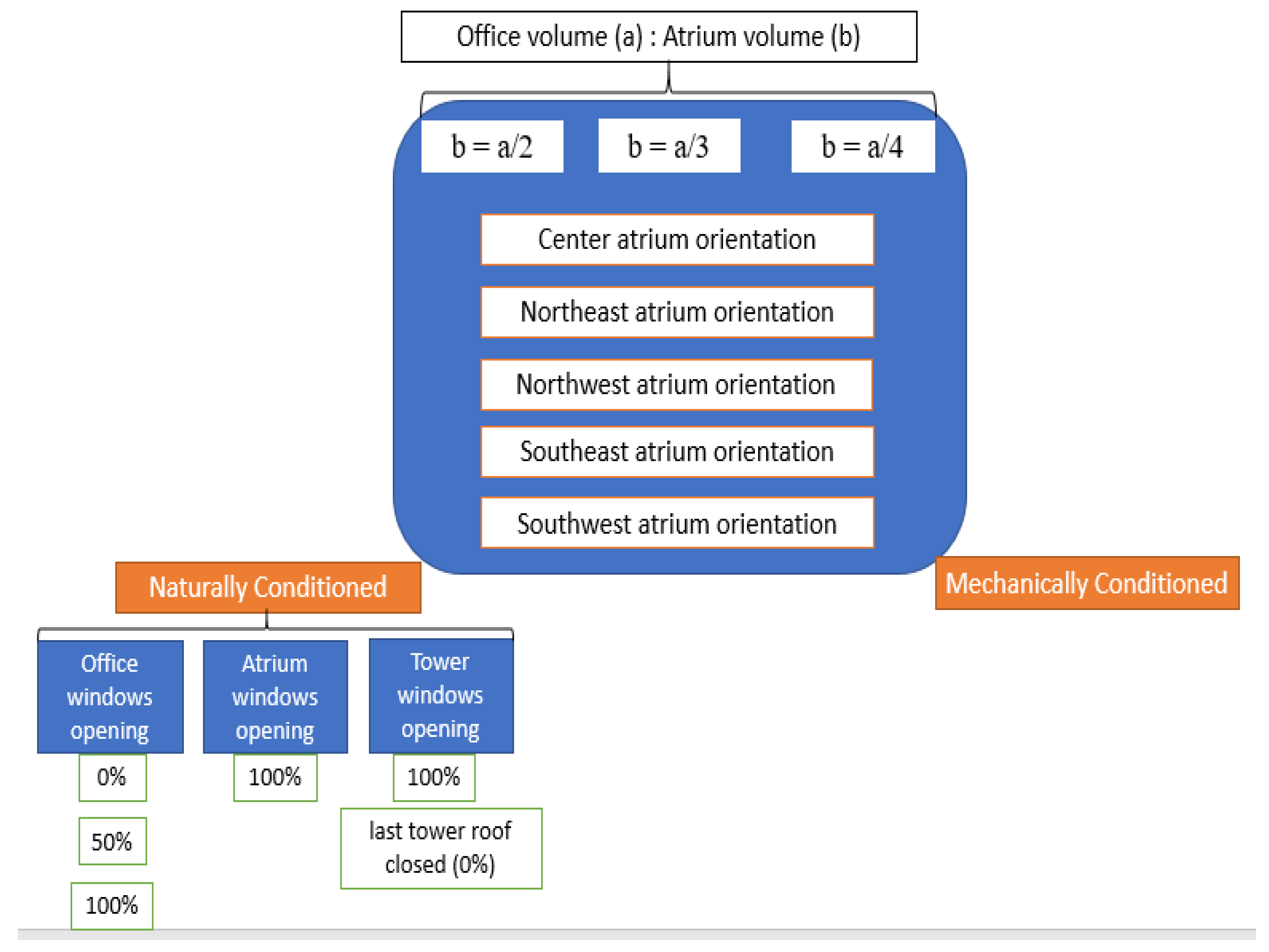












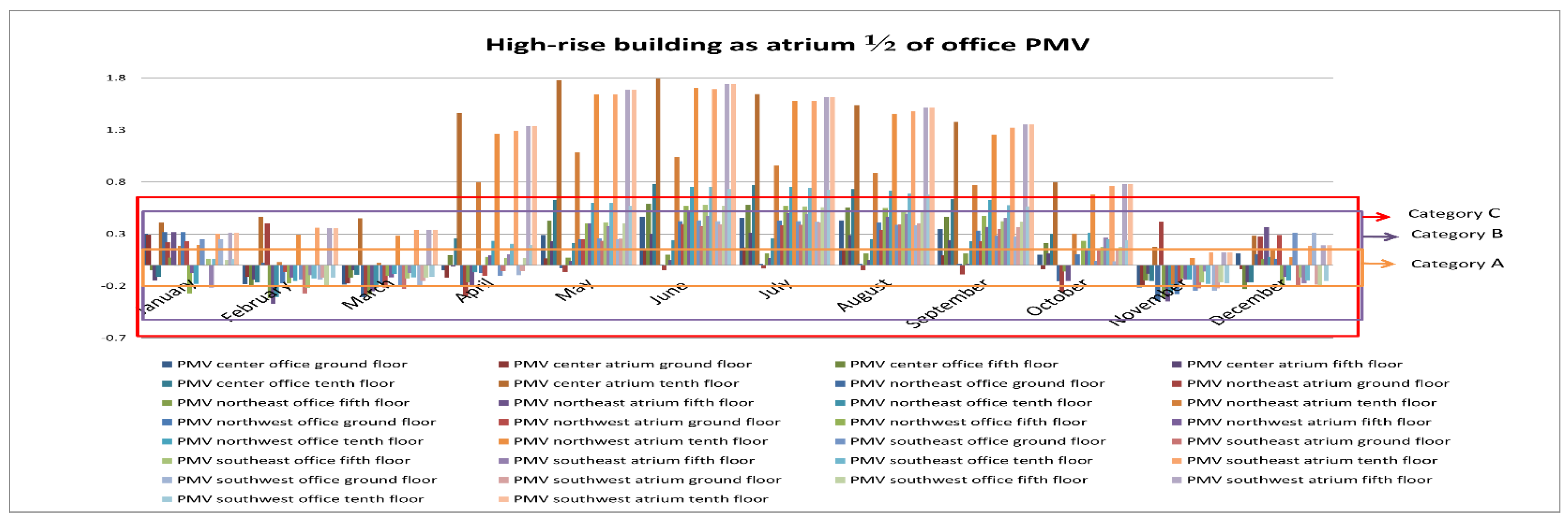





| Single-Floor (One Floor) | Medium-Rise Floors (Five Floors) | High-Rise Floors (Ten Floors) |
|---|---|---|
 | 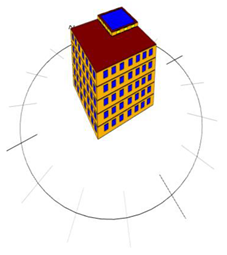 |  |
| Atrium Placement in the Building | Atrium Proportion as 1/2 of Office Proportion | Atrium Proportion as 1/3 of Office Proportion | Atrium Proportion as 1/4 of Office Proportion |
|---|---|---|---|
| Center | 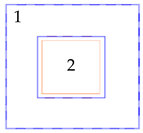 | 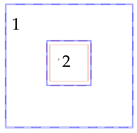 | 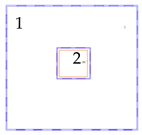 |
| Northeast | 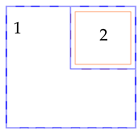 |  |  |
| Northwest | 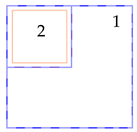 | 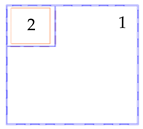 |  |
| Southeast | 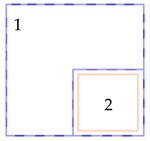 | 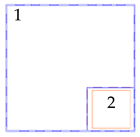 |  |
| Southwest | 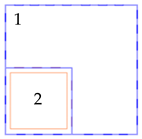 | 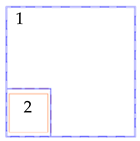 | 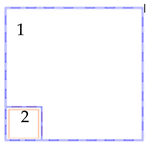 |
| Atrium Placement. | Atrium Proportion | Wind. Opening Ratios | Zone | Floor | Months | 90% Accept. | 80% Accept. |
|---|---|---|---|---|---|---|---|
| Center | 1/2 | 0% | O | Ground | May to June | * | * |
| 50% | January to June | ||||||
| July | * | ||||||
| 100% | January to March | * | |||||
| A | January to April | ||||||
| NE | 0% | O | * | ||||
| A | |||||||
| 50% | O | March to April | |||||
| A | January to April | * | |||||
| 100% | O | March to April | |||||
| A | |||||||
| NW | 0% | O | January to February | * | |||
| March to April | * | ||||||
| A | January to April | * | |||||
| May | * | ||||||
| 50% | O | January to February | |||||
| March to April | * | ||||||
| A | February to July | * | |||||
| 100% | O | March to April | |||||
| June to August | * | ||||||
| A | February to April | * | |||||
| May to June | * | ||||||
| SE | 0% | O | January to February | ||||
| March to April | * | ||||||
| A | January to April | * | |||||
| April to May | * | ||||||
| 50% | O | January to June | * | ||||
| A | |||||||
| 100% | O | January to July | |||||
| A | January to June | ||||||
| July to August | * | ||||||
| SW | 0% | O | January to April | * | |||
| A | * | ||||||
| 50% | O | January to June | |||||
| A | January to July | * | |||||
| 100% | O | January to August | |||||
| 0% | January to April | * | |||||
| SW | 50% | A | January to April | * | |||
| O | January to June | ||||||
| A | January to July | * | |||||
| 100% | O | January to August | |||||
| A | Whole year | * | |||||
| Atrium Placement | Atrium Proportion | Wind. Opening Ratios | Zone | Floor | Months | 90% Accept. | 80% Accept. |
|---|---|---|---|---|---|---|---|
| Center | 1/3 | 0% | O | Ground | January to April | ||
| A | January to May | ||||||
| 50% | O | January and May | |||||
| February to March | * | ||||||
| A | January to March | * | |||||
| April and June | * | ||||||
| 100% | O | January to March September to December | * | ||||
| April | * | ||||||
| A | January to July | * | |||||
| NE | 0% | O | January to February | ||||
| March to April | * | ||||||
| A | January to May | * | |||||
| 50% | O | January to June | |||||
| April to July | * | ||||||
| A | January to July | * | |||||
| 100% | O | ||||||
| A | January to August | ||||||
| NW | O | March to April | |||||
| A | January to April | ||||||
| SE | O | January to February | |||||
| 0% | A | April | * | ||||
| SW | O | March to May and October | * | ||||
| A | January | ||||||
| 100% | O | January to March November to December | * | ||||
| April to July | * | ||||||
| A | January to March May to September | * | |||||
| Center | 1/4 | 0% | O | January to April | * | ||
| A | January to May | ||||||
| 100% | O and A | January to August | |||||
| NE | 0% | O | January to July | * | |||
| 50% | May to July | ||||||
| A | January to June | ||||||
| 100% | O | March to April | * | ||||
| NW | 0% | March to May November to December | |||||
| A | January to March | ||||||
| 100% | O | January to May | |||||
| A | December | * | |||||
| SE | 0% | O | April to May October to November | ||||
| February to March | * | ||||||
| A | December to February | ||||||
| SW | 100% | O | April to May October to November | ||||
| A | March | ||||||
| Atrium Placement | Atrium Proportion | Wind. Opening Ratios | Zone | Floor | Months | 90% Accept. | 80% Accept. |
|---|---|---|---|---|---|---|---|
| Center | 1/2 | 0% | O | Ground | June to October | * | |
| A | June to July | * | |||||
| August to September | * | ||||||
| O | Fifth | May | * | ||||
| June to September | |||||||
| 50% | Ground | June to September | * | ||||
| A | June to October | ||||||
| September | * | ||||||
| O | Fifth | June to October | * | ||||
| May | * | ||||||
| 100% | Ground | June to September | * | ||||
| October | * | ||||||
| A | June to September | * | |||||
| October | * | ||||||
| NE | 0% | O | Ground | June to October | * | ||
| A | Fifth | May to July | |||||
| O | |||||||
| 50% | O | Ground | June to October | ||||
| May | * | ||||||
| A | June to October | * | |||||
| O | Fifth | ||||||
| 100% | O and A | Ground | June to September |
| Atrium Placement | Atrium Proportion | Wind. Opening Ratios | Zone | Floor | Months | 90% Accept. | 80% Accept. |
|---|---|---|---|---|---|---|---|
| Center | 1/2 | 0% | O | Ground | June to October | * | |
| A | June to July | * | |||||
| August to September | * | ||||||
| O | Fifth | May | * | ||||
| June to September | |||||||
| 50% | Ground | * | |||||
| A | June to October | ||||||
| September | * | ||||||
| O | Fifth | June to October | * | ||||
| May | * | ||||||
| 100% | Ground | June to September | * | ||||
| October | * | ||||||
| A | June to September | * | |||||
| October | * | ||||||
| NE | 0% | O | June to October | * | |||
| A | |||||||
| O | Fifth | May to July | |||||
| 50% | Ground | June to October | |||||
| May | * | ||||||
| A | June to October | * | |||||
| O | Fifth | ||||||
| 100% | O and A | Ground | June to September | ||||
| October | * | ||||||
| O | Fifth | June to September | * | ||||
| October | * | ||||||
| NW | 0% | Ground | July to October | * | |||
| Fifth | May to June | ||||||
| 50% | Ground | June to September | |||||
| October | * | ||||||
| A | June to September | * | |||||
| October | * | ||||||
| O | Fifth | June to September | * | ||||
| October | * | ||||||
| 0% | October | * | |||||
| Ground | July to October | * | |||||
| Fifth | May to June | * | * | ||||
| 50% | Ground | June to September | |||||
| Fifth | October | * | |||||
| NE | 100% | O | June to September | * |
| Atrium Placement | Atrium Proportion | Wind. Opening Ratios | Zone | Floor | Months | 90% Accept. | 80% Accept. |
|---|---|---|---|---|---|---|---|
| NW | 1/2 | 100% | O | Ground | June to September | * | |
| October | * | ||||||
| A | June to September | * | |||||
| October | * | ||||||
| O | Fifth | June to September | * | ||||
| October | * | ||||||
| SE | 0%, 50%, and 100% | Ground | June to October | * | |||
| A | |||||||
| O | Fifth | ||||||
| SW | Ground | ||||||
| A | |||||||
| O | Fifth | ||||||
| Center | 1/3 | 0% | Ground | ||||
| A | |||||||
| O | Fifth | March to June | |||||
| 50% and 100% | O and A | Ground | June to September | ||||
| October | * | ||||||
| O | Fifth | June to September | * | ||||
| October | * | ||||||
| NE and NW | 0% | Ground | June to October | * | |||
| A | Ground | July to August | * | ||||
| O | Fifth | September to November May | * | ||||
| 50% | Ground | May to June | |||||
| July to August | * | ||||||
| A | May to June | * | |||||
| O | Fifth | ||||||
| July to August | * | ||||||
| 100% | Ground | May to September | * | ||||
| A | August to October | ||||||
| July | * | ||||||
| O | Fifth | August to October | * | ||||
| July | * | ||||||
| SE and SW | 0% | O and A | Ground | June to September | * | ||
| Fifth | May to October | ||||||
| 1/3 | 50% and 100% | O | Ground | June to September | * | ||
| Fifth | October | * | |||||
| June to September | * | ||||||
| October | * | ||||||
| Center | 1/4 | 0% | Ground | June to September | * | ||
| A | |||||||
| O | Fifth | May to June | |||||
| September | * |
| Atrium Placement | Atrium Proportion | Wind. Opening Ratios | Zone | Floor | Months | 90% Accept. | 80% Accept. |
|---|---|---|---|---|---|---|---|
| Center | 50% | O and A | Ground | June to August | * | ||
| October | * | ||||||
| O | Fifth | July to August | * | ||||
| 100% | O and A | Ground | |||||
| May | * | ||||||
| NE | 0% | June to August | * | ||||
| A | October | * | |||||
| O | Fifth | May to June | * | ||||
| 50% and 100% | O and A | Ground | May to September | ||||
| O | Fifth | May | * | ||||
| NW | 0% | O and A | Ground | May to September | * | ||
| O | Fifth | May to June September to October | |||||
| 50% and 100% | O and A | Ground | June to September | ||||
| May to October | * | ||||||
| O | Fifth | June to September | * | ||||
| May to October | * | ||||||
| SE | 0% | Ground | May to September | * | |||
| A | October | * | |||||
| O | Fifth | May to June | * | ||||
| 50% and 100% | O and A | Ground | September | * | |||
| June to September | * | ||||||
| O | Fifth | September | * | ||||
| 1/4 | June to September | * | |||||
| SW | 0% | Ground | May to September | ||||
| A | June to August | ||||||
| A | Ground | July to September | * | ||||
| O | Fifth | May September to November | * | ||||
| 50% and 100% | O and A | Ground | May to September | ||||
| October | * |
| Atrium Placement | Atrium Proportion | Wind. Opening Ratios | Zone | Floor | Months | 90% Accept. | 80% Accept. |
|---|---|---|---|---|---|---|---|
| NE | 1/2 | 100% | O | Fifth and Tenth | November and December | * | |
| NW | A | Ground | May and July | * | |||
| O | Fifth and Tenth | ||||||
| Ground | June to August | * | |||||
| SW | O and A | Ground, Fifth, Tenth | Whole year | ||||
| 50% | November and December | ||||||
| January to September | * | ||||||
| Center | 1/3 | 0% | O | Ground | June to December | ||
| A | May to December | ||||||
| O | Fifth | June to September | |||||
| Tenth | May to September | ||||||
| 50% | Ground | June to December | |||||
| A | July to December | ||||||
| O | Tenth | June to November | |||||
| Center | 100% | O and A | Ground, Fifth, and Tenth | July to December | |||
| NE | 0%, 50%, and 100% | June to December | * | ||||
| NW | 0% | O | Tenth | * | |||
| 50% | O and A | Ground, Fifth, and Tenth | |||||
| 100% | |||||||
| SE | 0% | Ground | Whole year | * | |||
| Fifth, and Tenth | June to September | ||||||
| 50% | Ground, Fifth, and Tenth | July to December | |||||
| 100% | May to December | * | |||||
| SW | 0% | Ground | June, November, and December | * | |||
| July, August, and September | * | ||||||
| Center | 1/2 | 100% | O | January to April | |||
| A | |||||||
| O | Fifth | May to June | * | ||||
| Tenth | Whole year | * | |||||
| NE | 50% | Ground | January to October | ||||
| 100% | A | February to July | * | ||||
| January, August, September, and October | * | ||||||
| O |
| Atrium Placement | Atrium Proportion | Wind. Opening Ratios | Zone | Floor | Months | 90% Accept. | 80% Accept. |
|---|---|---|---|---|---|---|---|
| SE | 1/3 | 0% | O and A | Ground | June to December | * | * |
| O | Fifth and Tenth | June to September | |||||
| 50% and 100% | O and A | Ground, Fifth, and Tenth | July to December | ||||
| SW | 0% | O | Fifth | June and July | |||
| Center | 1/4 | 50% and 100% | O and A | Tenth | August and September | * | |
| Ground, Fifth, and Tenth | June to December | ||||||
| 0% | O | Ground | * | ||||
| Fifth and Tenth | June to September | ||||||
| 50% and 100% | O and A | Ground and Fifth | July to December | ||||
| NE | 1/3 | 0% | O | Ground | March to May | ||
| June to September | * | ||||||
| A | April to July | * | |||||
| August | * | ||||||
| O | Fifth | January to May | * | ||||
| Tenth | February to May | ||||||
| January and June | * | ||||||
| 50% | A | ground | August to December | * | |||
| July to December | * | ||||||
| NE | 1/3 | 50% | O | Fifth and Tenth | July to November | ||
| 100% | Ground | March to September | |||||
| A | July to November | ||||||
| O | Fifth | Jan. to May | |||||
| Tenth | January, May, June, and August | * | |||||
| February, March, and April | * | ||||||
| NW | 0% | Ground | June | * | |||
| July to December | * | ||||||
| A | May to December | * | |||||
| June to November | * | ||||||
| O | Fifth | May to Aug. | |||||
| Tenth | June to September | ||||||
| 50% | Ground | July to December | * | ||||
| 100% | Fifth and Tenth | July to December | |||||
| July to December |
© 2019 by the authors. Licensee MDPI, Basel, Switzerland. This article is an open access article distributed under the terms and conditions of the Creative Commons Attribution (CC BY) license (http://creativecommons.org/licenses/by/4.0/).
Share and Cite
Aram, R.; Alibaba, H.Z. Analyzing Atrium Volume Designs for Hot and Humid Climates. Sustainability 2019, 11, 6213. https://doi.org/10.3390/su11226213
Aram R, Alibaba HZ. Analyzing Atrium Volume Designs for Hot and Humid Climates. Sustainability. 2019; 11(22):6213. https://doi.org/10.3390/su11226213
Chicago/Turabian StyleAram, Reihaneh, and Halil Zafer Alibaba. 2019. "Analyzing Atrium Volume Designs for Hot and Humid Climates" Sustainability 11, no. 22: 6213. https://doi.org/10.3390/su11226213
APA StyleAram, R., & Alibaba, H. Z. (2019). Analyzing Atrium Volume Designs for Hot and Humid Climates. Sustainability, 11(22), 6213. https://doi.org/10.3390/su11226213





